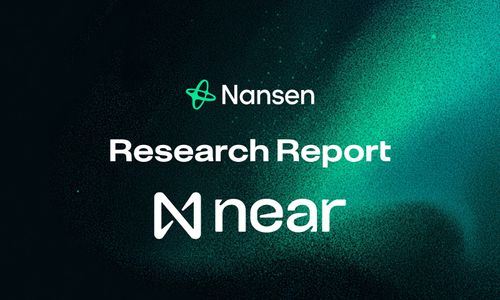What is MegaETH
MegaETH is an Ethereum Layer 2 (L2) solution designed to bring real-time performance to blockchain transactions. It plans to achieve sub-millisecond latency and support over 100,000 transactions per second (TPS), making it the first real-time blockchain of its kind.
Key Features:
- New State Trie: MegaETH introduces a highly memory and I/O-efficient state trie that scales to terabytes of data without additional I/O costs, even on nodes with limited RAM.
- Write-Optimized Storage Backend: The platform revamps the storage backend to optimize write performance while maintaining predictable read latencies, accommodating an extremely high rate of state updates.
- Bytecode Compilation: By utilizing just-in-time (JIT) compilation, MegaETH removes interpretation overhead, bringing near bare-metal performance to compute-intensive decentralized applications (DApps).
- Two-Pronged Parallel Execution: MegaETH employs distinct strategies for block production and validation, maximizing parallel speedup and avoiding state contention.
- Efficient State Sync: A custom peer-to-peer networking protocol optimized for low-latency and high-throughput state synchronization ensures that even low-cost nodes with limited bandwidth can stay in sync with the network at 100,000 TPS.
- Streaming EVM: To achieve a 1-millisecond block time target, MegaETH co-designed an efficient streaming block production pipeline with its parallel execution engine, allowing continuous processing of incoming transactions in real time.
Why Could This One be Different?
While there are several Ethereum L2 solutions and EVM-compatible blockchains, MegaETH sets itself apart through its focus on real-time performance and high transaction throughput. Traditional blockchains often face limitations such as low transaction throughput, limited compute capacity, and longer block times, which can hinder the development of sophisticated, fully on-chain decentralized applications.
MegaETH addresses these challenges by offering:
- High Transaction Throughput: With support for over 100,000 TPS, MegaETH enables the development of applications that require rapid transaction processing.
- Sub-Millisecond Latency: The platform's sub-millisecond latency ensures that transactions are processed almost instantaneously, providing a seamless user experience.
- Enhanced Compute Capacity: MegaETH's architecture allows for more complex computations to be performed on-chain, enabling the creation of sophisticated DApps that were previously not feasible due to performance constraints.
By overcoming these limitations, MegaETH opens the door to a new class of decentralized applications that can operate with the speed and efficiency of traditional cloud computing servers, bridging the gap between blockchain technology and conventional computing.

What this means is, that there is a natural limit to the computing speed of these chains and even opBNB would need a lot of time computing gas-intensive operations, especially when compared to traditional Web2 architecture. As a comparison, lets say a Uniswap Swap (simple one-hop), costs around 150k Gas. This would mean opBNB (by far the best of the bunch) could handle around ~660 swaps per second, an almost comically small number compared to e.g. the 1.4m trades per second that Binance claims to be able to process.
MegaETH promises to introduce real-time execution, enabling a CEX like experience and putting these problems to the past.
Valuations
MegaETH has raised over $40m total so far, the latest raise through their limited soulbound NFT mint. The mint of half of 5,000 NFTs (half of the total supply, the other half given to projects) for 1 ETH each brought in ~$13.5m. They fully minted out within a short period of time, indicating huge appetite of the lucky, eligigible user base and hinting at an perceived value beyond that 1 ETH happily spent.

Upon token release, 5% of the supply will go to (all 10k) NFT holders, putting the valuation to at least $540m after the latest mint, although people would likely have been happy to pay more.
This should already be a win for early investors, with previous rounds raised as recent as mid December at a ~$200m valuation (although vesting terms might be less favorable for NFT holders).
Opportunities
With testnet launching in around a month, you can get an early glimpse of the ecosystem and user experience of MegaETH. Notable DeFi projects planning to launch include:
- GTE, a real-time DEX all stacked with launchpad, promising a CEX-like user experience completely onchain.
- CAP, a stablecoin optimizing and generating yields from various sources.
- Teko, a lending protocol that leverages real-time execution to mitigate downsides of traditional lending protocols like large liquidations.
If apps launch on testnet, you can already grasp early on if these projects could indeed usher in the paradigm shift that MegaETH promises (or fail to deliver on the hype) and position yourself accordingly with strong beta plays to the MegaETH token itself.
MegaETH seems to enjoy significant optimism from the crypto community, including Vitalik himself as angel investor. The lightning fast sold-out community round at ~$200m valuation as well as the completely minted out NFT sale at ~$540m valuation pre-testnet (both with vesting conditions) signal considerable interest and suggest an actual valuation north of at least ~$1b.
However, if this L2 will indeed be different from all the others, only time will tell. Will real-time computation really unlock unseen killer-use cases or are current L2s and non-evm chains like Solana already plenty fast for most things you might need to do end-to-end onchain? And will MegaETH attract a user base large enough to actually utilize all the throughput?




